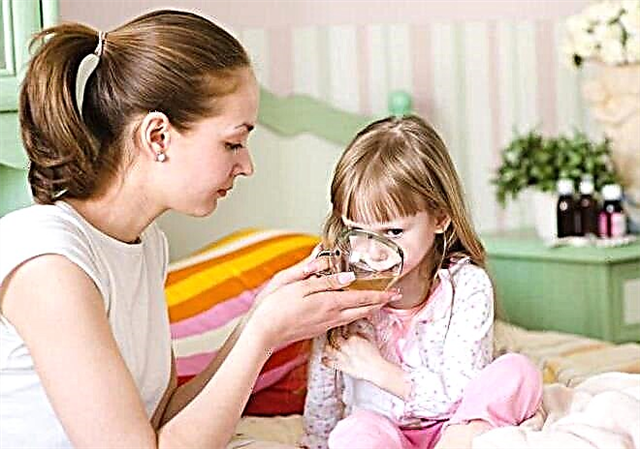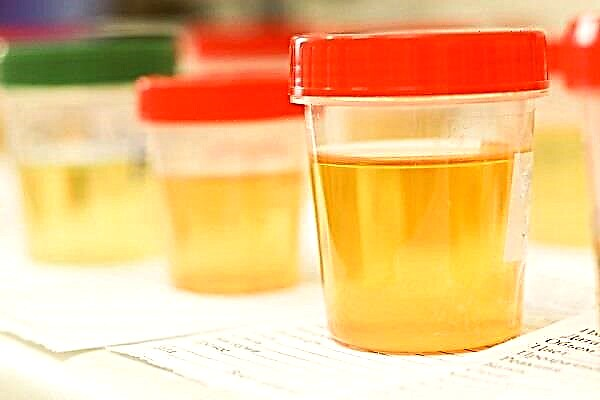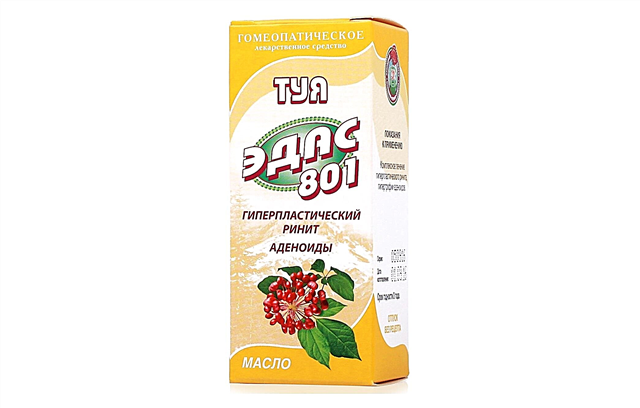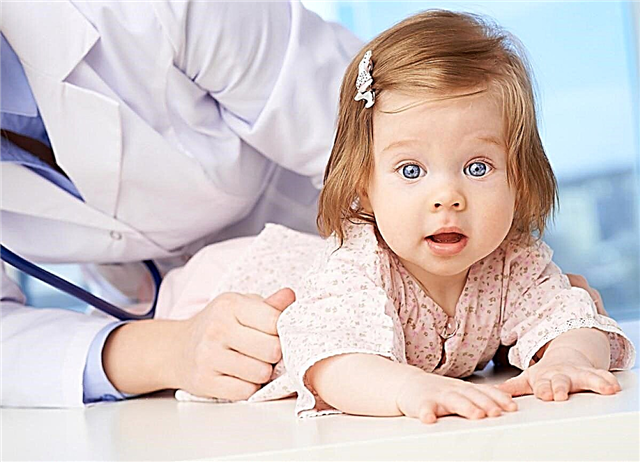
Treating stomatitis, gum disease, pharyngitis, or other conditions in the mouth and throat is rarely complete without the use of agents that act topically to relieve pain and speed up healing. One of the most popular drugs that help to recover from such diseases is Lizobact.
Such a medicine is highly praised for its safe effect on the human body, due to which it is used even in pregnant and lactating women. Is it possible to give it to children, in what dosage and what analogs can it be replaced with?

Release form
Lizobact is available in the form of tablets, which are recommended for patients to dissolve in the oral cavity. They have a white color (although they can be creamy or yellowish) and have a sweet taste, and on the one hand there is a dividing risk. They are placed in blisters of 10 pieces, one box contains 30 tablets.

Composition
A sick child receives two active ingredients from each tablet:
- Lysozyme 20 mg.
- Pyridoxine at a dosage of 10 mg.
Each ingredient is represented by hydrochloride and is supplemented with lactose monohydrate, sodium saccharinate and gum tragacanth. There are both vanillin and magnesium stearate in the tablets, which make the medicine hard and pleasant to the taste.
Operating principle
Lizobact belongs to topical antiseptics, since it has antimicrobial, reparative, immunostimulating and antiviral properties.
Lysozyme, which is part of it, is an enzyme that has a direct antiseptic effect on many types of bacteria, viral particles and fungi. Such a protein substance is important for local immunity, providing nonspecific protection against various pathogens.
The second active component (pyridoxine) has a protective effect on the mucous membrane of the oropharynx, in particular, it promotes the healing of various injuries (including aft). Moreover, such an ingredient does not interfere with the action of lysozyme in any way.
Application of Lizobact:
- helps get rid of pain, swelling of the mucous membrane and inflammation;
- accelerates epithelization of mucosal lesions;
- does not cause intoxication or allergies (in most patients);
- helps prevent relapses.

Instructions for use:
- The pill is given to the child, offering to dissolve it slowly in the mouth. It is not advised to chew the medicine. Even if the mass of the tablet has already melted, it should be kept in the mouth as long as possible until it is completely dissolved by saliva.
- A single dose for a child under 12 years old is one tablet. The medication is given three times a day to children aged 3 to 7 years, and to a child 7-12 years old, the medicine can be given four times.
- If the patient is already 12 years old, then he must simultaneously dissolve two Lizobact tablets in the mouth. This should be done three or four times during the day.
- The duration of treatment is influenced by various factors, but most often the drug is prescribed for a course of 8 days.

Indications
Lizobact is used for inflammation and infection of the mouth or larynx. Tablets are advised to dissolve:
- With stomatitis, including with aphthous ulceration of the mucous membrane.
- With inflammation of the oral mucosa under the influence of the herpes virus.
- With erosive damage to the mucous membrane under the influence of any other factors.
- With gingivitis.
- With periodontal diseases.
- With catarrhal inflammation of the upper respiratory tract, for example, with pharyngitis or pharyngotonsillitis.


From what age is it allowed to take?
Pediatricians prescribe Lizobact to children who are 3 years old. If a small patient is younger (for example, he is only 2 years old), then the doctor selects another remedy, which also has a local anti-inflammatory and antiseptic effect on the mucous membrane of the oropharynx, but is allowed for children under three years old.

Contraindications
Lizobact should not be given to children with pyridoxine or lysozyme intolerance. Since the composition of the drug includes lactose, it is not prescribed for milk sugar intolerance, as well as for a shortage of lactase in the body of a small patient.
You should not use such tablets and with glucose-galactose malabsorption. There are no other contraindications for resorption of Lizobact. Adults can use the remedy even when breastfeeding and carrying a baby.


Side effects
The manufacturer calls the only possible adverse reaction to Lizobact an allergy. If the child has discomfort in the mouth, a rash on the skin or other signs of an allergic reaction after the drug has been absorbed, the drug must be canceled immediately.


Overdose
If a child accidentally takes a very large number of pills, it will lead to tingling and numbness in the limbs, as well as loss of sensitivity in the hands and feet. To eliminate such consequences of an overdose, it is necessary to give the patient a lot to drink so that the active substances of the drug are quickly excreted from the body with urine.

Interaction with other drugs
Lizobact has been noted to enhance the antimicrobial effect of various antibiotics, for example, chloramphenicol and penicillin. Taking such pills also enhances the effectiveness of diuretics, but weakens the therapeutic effect of levodopa.

Terms of sale
Buying Lizobact in a pharmacy does not cause any difficulties, because it is an OTC product. The average price of a pack of 30 tablets is 260-290 rubles.

Storage conditions and shelf life
To store Lizobact at home, you should find a place where children cannot get the drug. It shouldn't be very humid in such a place. The recommended storage temperature for the medicine is from +10 to +30 degrees. The shelf life of the drug is very long and is 5 years. If it has expired, children should not be given expired pills.

Reviews
There are a lot of positive reviews about the use of Lizobact in children. Such pills are praised by both parents and doctors. The main advantage of the drug is called its safety, because the drug can be given to both young children and pregnant women. There are practically no side effects from such a remedy, and most young patients like the sweet taste.
According to mothers, Lizobact helps well with various acute diseases of the pharynx and oral cavity, for example, with herpetic eruptions on the oral mucosa or with aphthous stomatitis.
The disadvantages of tablets most often include the rather high cost of the drug. Because of it, many parents buy other local antiseptics, which are somewhat cheaper. Also, occasionally there are negative reviews with complaints about the absence of any therapeutic effect or an allergic reaction that has arisen when taking.

Analogs
Other drugs that act locally on the mucous membrane of the oropharynx can replace Lizobact. Such means are:
- Grammidin. These tablets contain the antimicrobial ingredient gramicidin C, supplemented with cetylpyrinium chloride, which has antiseptic properties. The remedy is used for angina, stomatitis, pharyngitis and other pathologies. The drug is given to children from the age of 4.
- Hexalysis. Such tablets, like Lizobact, contain lysozyme, but it is supplemented with biclotymol and enoxolone, which enhances the antiseptic effect of the drug. These ingredients help fight inflammation and soreness. It is possible to dissolve Hexalysis for children from the age of 6.
- Laripront. These tablets have not only antimicrobial effects, but also antifungal, hemostatic, antiviral and mucolytic effects. It is provided by the combination of lysozyme with dequalinium chloride. For children, medication is prescribed at any age.
- Faringosept. Such inexpensive pills are an antiseptic that inhibits various types of microbes, therefore they are effective against pharyngitis, gingivitis, tonsillitis and other diseases. In childhood, they are prescribed from the age of 3.
- Imudon. These mint lozenges contain lysates of streptococci, lactobacilli, candida, corynebacteria and other microorganisms. The drug stimulates local immunity, therefore, it is often used for inflammatory diseases of the mouth and pharynx. Children are prescribed this remedy from the age of three.
- Tonsilgon N. Such a remedy based on various medicinal plants (chamomile, marshmallow, dandelion, oak bark, etc.) has an antiseptic and anti-inflammatory effect. The drug is in demand for tonsillitis and laryngitis, as well as for other diseases of the throat. It is prescribed in the form of drops for children over 1 year old, and in the form of pills it is prescribed from 6 years old.
- Septolet. These antiseptic pastilles based on levomenthol, eucalyptus oil, thymol, benzalkonium and mint oil are used in children over four years of age with stomatitis, sore throat and other pathologies of the mouth and throat.
In addition, the doctor may recommend replacing Lizobact with drugs presented in the form of a solution and a spray. Among them, Lugol, Oralsept, Yoks, Hexasprey, Ingalipt, Hexoral and other medicines are popular. At the same time, you should choose an analogue together with a pediatrician, because each of these funds has a different composition and different age restrictions.
You can learn more about the treatment of throat in children from the video of Dr. Evgeny Komarovsky.



